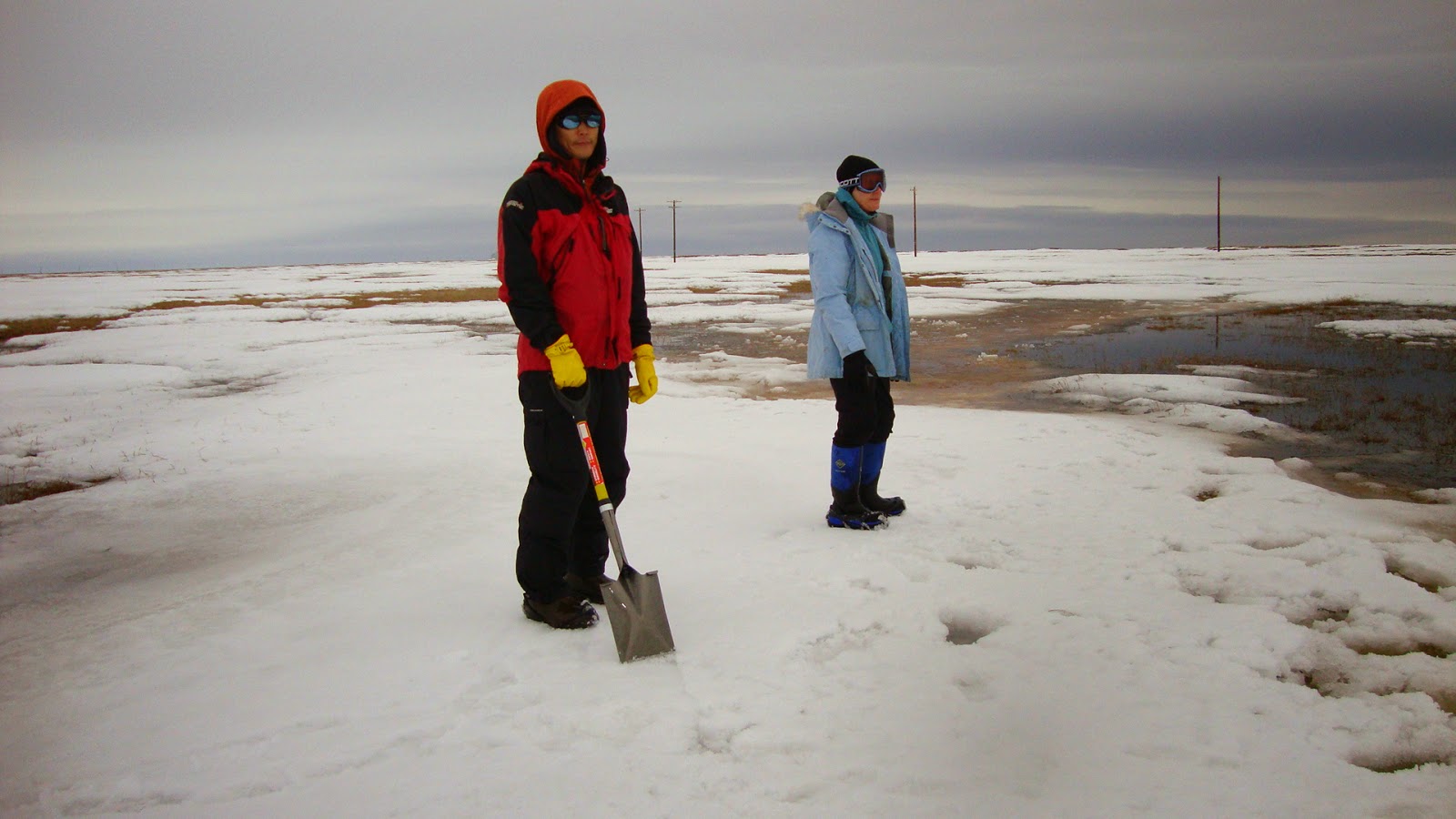Each of the last three days I
have walked the 2 kilometers from the road to our field sites on the Barrow
Environmental Observatory (BEO). Although snowmelt has been slow to develop, I
have noticed that the snow conditions are changing. Those who spend time
outdoors in the late winter and early spring know the challenge that comes from
walking across snow and constantly breaking through that surface crust, only to
drop deeper into the underlying snow. That is what it was like today and we are
beginning to see signs of pending snowmelt.
Cathy and Go have been
characterizing snow conditions all week. Their research began with surveys of
snow depth and has recently expanded to include measurements of snow density
and snow water equivalent. A series of transects were established and Cathy and
Go walk together every day collecting information that will help us to understand
the timing and quantity of water distributed across the landscape as the snow
melts. Their measurements begin with inserting a plastic tube of known diameter
into the snow. Cathy records snow depth in centimeters while Go gently digs
down to the base of the cylinder and lifts the tube, now full of snow, out of
the hole. The snow in the tube is transferred to a plastic bag and then quickly
weighed. A simple calculation allows the volume of snow to be estimated along
with the weight of water contained within that volume, and based on those two
pieces of information, snow density and snow water content can be calculated.
Such information will be useful as we study the relationships between snowmelt
and lateral runoff during this dynamic part of the season.
The measurements that Cathy and
Go are making suggest that the density and water content of snow is increasing
with each day. We see some signs of standing water on the BEO, but no
significant lateral runoff yet. It is only a matter of time.





